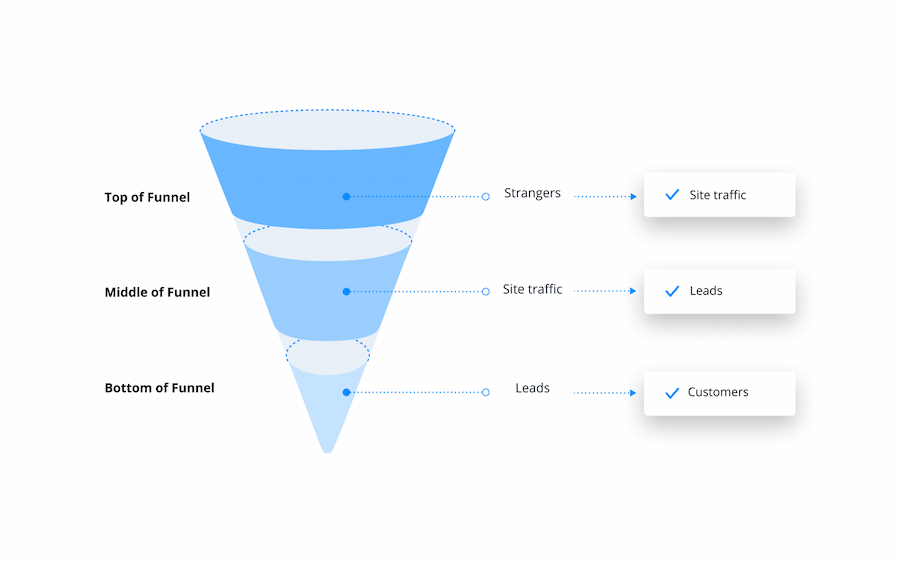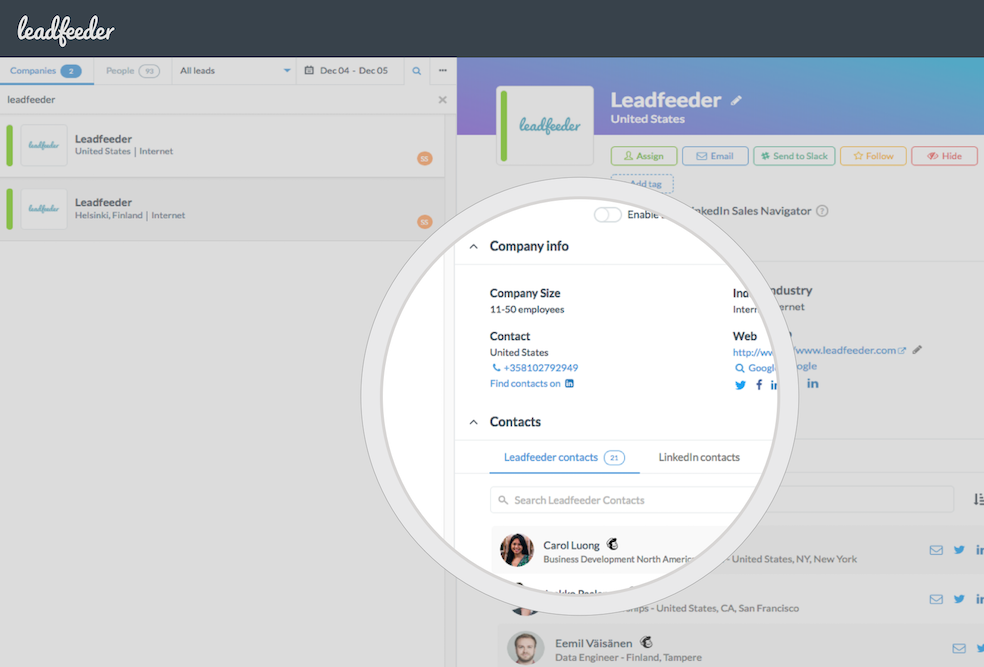
The Essential Guide to Digital Sales
The digital revolution has forever changed how people buy – and how you should sell.
Traditional sales techniques like cold calling still exist, but the companies that truly profit are those that incorporate digital tactics into their sales processes. In this post, we define digital sales and share eight ways you can earn customers and foster long-term relationships.
- What is digital sales?
- How to master digital sales: 8 step selling process
- Userlike: your sidekick for generating more digital sales
What is digital sales?
The term “digital sales” refers to sales strategies, tactics, and methods that make use of virtual channels or platforms to connect with buyers and convert them into paying customers. These channels include online searches, social media, review platforms, live chat, mobile messaging and email.
Shoppers today are more informed than ever. They rely on multiple channels, devices, and tools throughout their buyer journeys, gathering a wealth of knowledge before they ever speak to a salesperson.
Research by CSO Insights found that over 70% of B2B buyers have fully defined requirements before interacting with a sales rep. What's more, just 23% of B2B buyers view sellers as a top resource for solving their problems. B2C isn't any different. According to Tulip Retail , 83% of consumers believe they’re more knowledgeable than retail associates.
How to master digital sales: 8 step selling process
Whether you're in B2B or B2C, success in digital sales starts with deeply understanding your customers' behavior. Armed with this knowledge, you can then make use of the shiny new sales tools and methodologies that the digital age has given us.
Here is your essential 8 step selling process in digital sales.
1
Create your customers’ buying funnels
One key difference between analog and digital sales is that the latter is more complex.
While traditional sales are linear (i.e., a seller knocks on the customer’s door, introduces the product, and converts the buyer), today’s digital-savvy users can go through multiple touchpoints and can have various paths to purchase.

You won’t be able to sell effectively if you don’t understand the buying paths or processes of your customers, which is why it’s important to map out their purchasing journeys.
What are the different stages that people go through as they go from being a cold lead, to a hot prospect, to a paying customer? Document and diagram that journey.
Use a tool like Draw.io or Smartdraw to craft a diagram of your customers’ purchasing journeys, which are often funnels like the one pictured above. For each stage, list what you could use to capture, interest and nurture your customer with, like lead magnets, webinars, demos, etc.
This will give you a visual representation of how prospects become customers, and it’ll make the process easier for your team to understand.
2
List their motivations and obstacles
Know the motivations and obstacles of your customers at each stage of the buying process. Let’s say you’re selling time management software that helps people be more productive.
Someone who’s at the top of the funnel could be a person who’s feeling overwhelmed at work and wants to find a solution.

Their motivation might be: “I’m having trouble managing my tasks. There has to be a better way.”
An obstacle might be: “There are so many solutions out there. How do I know which is the right one?”
Meanwhile, a prospect who’s at the bottom of the funnel is already familiar with your offerings, so they would have different motivations and obstacles.
Their motivation might be: “Their software covers everything I need, and I can get more stuff done.”
An obstacle might be: “I’ll have to switch out my old platform for the new one. Migrating my data and configuring the new system can be a pain.”
Being aware of your buyers’ motivations and obstacles at various stages will help you come up with the right approach for moving them down the funnel.
For instance, when you know that a new prospect is overwhelmed by the number of solutions out there, you could create content to address that – for example in the form of social proof. Understanding of the data migration concerns of prospects at the tailend of their buying journey can guide your product development to make data import super-easy.
In either case, an awareness of what your customers are experiencing is crucial. Understanding what drives your customers at each part of the buying funnel can guide you and your team in sales calls, content development, and even product design.
3
Use a sales funnel solution
Keep your digital sales efforts organized using a platform that lets you track and manage leads as they go through your funnel.
You’ll want a solution that supports your sales team by automatically prompting them when action is required.
For instance, if a lead downloads your pricing list, that could indicate that they’re ready to buy. Your sales funnel platform should alert your team so they can immediately touch base with the customer.
A powerful solution you can use is Lime, which allows you to send email nurture newsletters based on lead segments and behaviors.
Lime keeps your sales and marketing teams aligned by ensuring that marketing campaigns are in sync with your sales process.
4
Keep sales and marketing tightly integrated
Marketing and sales need to be working closely together as a team. There should be a constant exchange of information between your teams to ensure that the leads brought into the funnel are a good fit and have a solid likelihood of becoming paying customers.
Misaligned incentives often get in the way here. Assessing your marketers for the number of leads without consideration of the quality of those leads – of the likelihood of them turning into paying customers – is a recipe for disaster.
Sales should provide marketing with continuous feedback on the quality of the leads they get from them. This helps the marketing department fine-tune their efforts, so they can keep bringing in people who convert.

Userlike: Instant chats, long-term customer relationships
Over 10,000 companies like Toyota and Hermes trust Userlike to connect with their customers every day - via website chat, WhatsApp, chatbots and more.
Learn moreThat feedback loop is critical, so create habits and processes to keep your sales and marketing teams aligned.
One way to get it right is to have regular sales and marketing meetings to keep everyone in the loop. At Userlike, we hold bi-weekly “customer” meetings where sales and marketing discuss lead sources, concerns, motivations, questions, and more. They put everyone on the same page and ensures that everyone is working towards the right goals.
5
Use live chat to capture leads on your website
Coming from a live chat solution, this section will of course read somewhat self-serving. But the fact is that from all the digital customer channels out there, live chat is by far the most powerful one in terms of lead generation.

The explanation is simple: Live chat conversations are initiated by customers on your website, which automatically qualifies them as warm or hot leads.
Your chat agents take on pre-sales support roles (part support, part sales), giving them the ability to offer prospects a unique look at your offerings.
And with the right solution, you can use live chat to gather customer intel and tailor your interactions. Userlike offers smart customer profiles , for instance. When someone provides their email address, Userlike automatically looks up public information about the user and creates a profile with social media handles.
Pro tip: Use “lead hooks” to turn anonymous chatters into qualified leads. Consider offering a free resource or quote to get their email address.
You could also take your live chat game to the next level with chatbots . Bots can be programmed to do anything from answering basic questions to scheduling appointments, and they can provide website visitors the info and services they need much more quickly.
While chatbots can't replace live people, they can field basic queries so your agents can focus on people who need greater assistance.
6
Use a website lead tracker
Website lead trackers can be powerful if you're selling to businesses. You implement them on your website, and they identify the companies that visit your website by matching their IP address with their own extensive database.
For example, if you sell ecommerce solutions and saw that four people from a prominent department store visited your website, then you can proactively target and engage those leads.

Two good solutions here are Leadfeeder and Lead Forensics . Both turn anonymous visitors into qualified leads by providing you with a list of business names that visited your site.
7
Leverage prospecting tools (B2B)
When it comes to B2B digital sales, lead prospecting can make or break your efforts. See to it that you’re going after the right companies and you’re engaging qualified decision-makers. You can make this step easier by using tools like:
- LinkedIn Sales Navigator - This is a standalone sales platform by LinkedIn which allows you to build lists of leads based on criteria like type of company, role, location, etc. LinkedIn Sales Navigator also offers lead recommendations, real-time sales updates, and messaging tools to help you connect with prospects.
- Qualifer.ai - We haven't used this one ourselves, but it was recommended by a business friend and it sounds promising. Qualifier.ai uses artificial intelligence to generate leads. Simply specify the type of businesses you'd like to target, and the solution will deliver prospects for your review. From there, you can come up with email templates to reach out and nurture your leads.
- G2 Buyer Intent - G2 is a review site for B2B software solutions. It offers Buyer Intent Data, enabling you to discover the companies that are researching your product, category, and competitors on the G2 platform. It's a handy tool for identifying prospects who are actively searching for a product in your category.
8
Track your funnel metrics and use data to set targets
The buyer funnel you set up in step 1 should give you a clear idea of how people typically move through your sales process. To optimize your sales efforts, you need to have a solid handle on the conversion ratios between these separate steps.

How many website visitors end up starting a free trial or booking a demo? From there, how many trialing users end up signing up for the paid version?
Such data helps you set sales and marketing targets. When your funnel ratios are clear, you know how many leads you need to put in on the top of the funnel to get to your target revenue. What's more, it helps to identify bottlenecks that need improving.
For best results, segment your data based on lead sources so you can gauge the effectiveness of your marketing efforts. For example, if leads that come in from organic search have a higher conversion ratio than those who find your company on social media, that suggests that improving your SEO efforts would be a valuable move.
If you haven’t done so yet, dig into your customer journey data and understand your funnel ratios. Use those insights to set targets and goals for both your sales and marketing teams. And if you are interested in using Userlike to propel your digital sales forward? Besides reading up on our own advanced analytics, check out the last section below…
Userlike: your sidekick for generating more digital sales
If you want to generate more digital sales, you need to upgrade your customer support. For the modern consumer, messaging is the fastest and most convenient channel for answering their questions.
Not only do your website visitors love the familiar nature of messaging, but these conversations help you learn who your consumers are and what problems they face. Trust is crucial to the consumer’s decision process, and chats are one of the best ways to build it. They are personal, intimate and in real time.
What better way to get started with chats than with a tool that specializes in exactly that: Userlike. We’ve helped thousands of clients get closer to their customers through customer messaging. To get an idea, check out skate shop Titus’ experience with Userlike:
Plus, Userlike makes it easy to not only chat directly with your site visitors, but to reach them on all of their favorite platforms, such as WhatsApp and Facebook Messenger.
Click here to get started with your free Userlike trial and start generating more digital sales.


